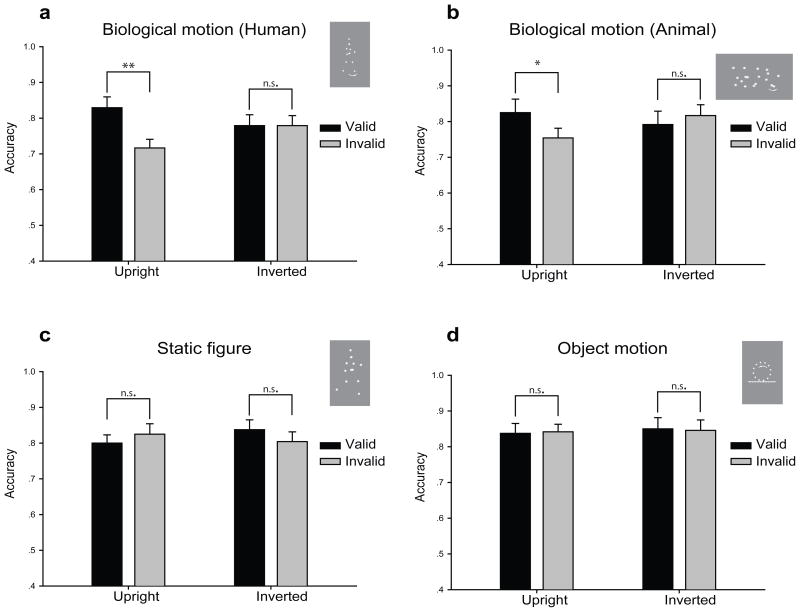Figure 2.
Results from Exp. 1–4. When human (a) or cat (b) motion sequences were used as attentional cues, results showed that observers’ performance on a subsequent Gabor probe orientation discrimination task was significantly better when the probe was presented in the walking direction of the point-light walkers or point-light cats (congruent condition) compared with when the probe was presented in the opposite direction (incongruent condition). However, such a reflexive attentional orienting effect disappeared when the point-light walkers or point-light cats were shown upside-down. (c) There was no significant difference whether the probe was presented on the facing or opposite direction of the static point-light figures. (d) Inanimate object motion could not induce reflexive attentional orienting. * p < 0.05; ** p < 0.01; n.s., no significance.

